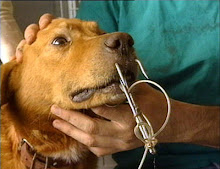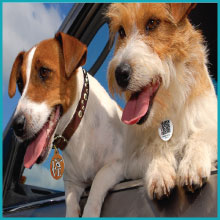Wednesday, February 23, 2011
Latest Survey Says Our Dogs And Cat Are Over Weight
Fat Pets Getting Fatter According to Latest Survey
Over Half the Nation’s Dogs and Cats Now Overweight Costing Pet’s Years and Owners Millions Warn Vets
Obesity continues to expand in both pets and people according to the latest pet obesity study. The fourth annual Association for Pet Obesity Prevention (APOP) National Pet Obesity Awareness Day Study found approximately 53% of cats and 55% of dogs were overweight or obese. Preliminary data released from a nationwide collaboration with Banfield, the nation's largest chain of veterinary clinics, reveals pet obesity continues to be a serious problem. APOP founder Dr. Ernie Ward remarks, "This year's data suggests that our pets are getting fatter. We're seeing a greater percentage of obese pets than ever before."
32% of cats in the preliminary sample were classified as overweight by their veterinarian and 21.6% were observed to be clinically obese or greater than 30% of normal body weight. 35% of dogs were found to be overweight and 20.6% obese. "While the general trend of overweight pets has remained fairly steady at around 50%, the number of obese pets is growing. This is troubling because it means more pets will be affected by weight-related diseases such as arthritis, diabetes, high blood pressure and kidney disease costing pet owners millions in avoidable medical costs."
The group began conducting nationwide veterinary surveys in 2007 and has seen a steady increase in the percentage of pets classified as obese or at least 30% above normal body weight. In 2007, roughly 19% of cats were found to be obese by their veterinarian and in 2010 that number increased to almost 22%. For dogs, obesity rates escalated from just over 10% in 2007 to 20% in 2010. “One of the reasons we think the obesity rate for dogs has dramatically increased is due to a better understanding of what an obese dog looks like. Veterinarians also realize how critical it is to tell a pet owner when their dog is in danger due to its weight.” comments Ward.
Proof that pet obesity is an important topic among veterinarians is the fact that the nation’s largest group of veterinary clinics, Banfield Pet Hospital, joined APOP in this year’s study. “Banfield is committed to improving the health and well-being of pets—weight-related disorders are a major concern for us,” states Dr. Elizabeth Lund, a veterinary epidemiologist and Banfield’s Senior Director of Research. “Preventive care is at the core of Banfield’s mission and we are incorporating weight assessment and counseling into each patient visit.”
Increased awareness can help prevent serious injuries. “As a surgeon, many of the joint problems I treat are related to excess weight. If pet owners could keep their pet at a normal weight, many of these surgeries could be avoided.” remarks Dr. Steven Budsberg of the University of Georgia and past-president of the American College of Veterinary Surgeons. “Even more important is the impact obesity has on joints and the arthritic changes that are often crippling. Many overweight pets experience severe joint pain that could easily be prevented by proper diet and exercise.”
Ward sums it up, “The bottom line with our annual surveys is that pets are battling excess weight just as their owners are. Our ultimate goal is to help pet owners better care for both themselves and their pets through better diet, exercise and lifestyle strategies.”
More information on pet obesity and complete data may be found at http://www.PetObesityPrevention.org.
See how many calories are in dry dog food here.
See how many calories are in canned and pouch dog foods here.
Subscribe to:
Post Comments (Atom)

















1 comment:
Even animals need balance diet and exercise. Some pet owners tend to feed their pets with homemade food. Although this is perfectly safe and healthy, it might not meet the necessary nutrition requirements for your pets. It's advisable to consult a veterinarian to know what's best for your cats or dogs.
Post a Comment